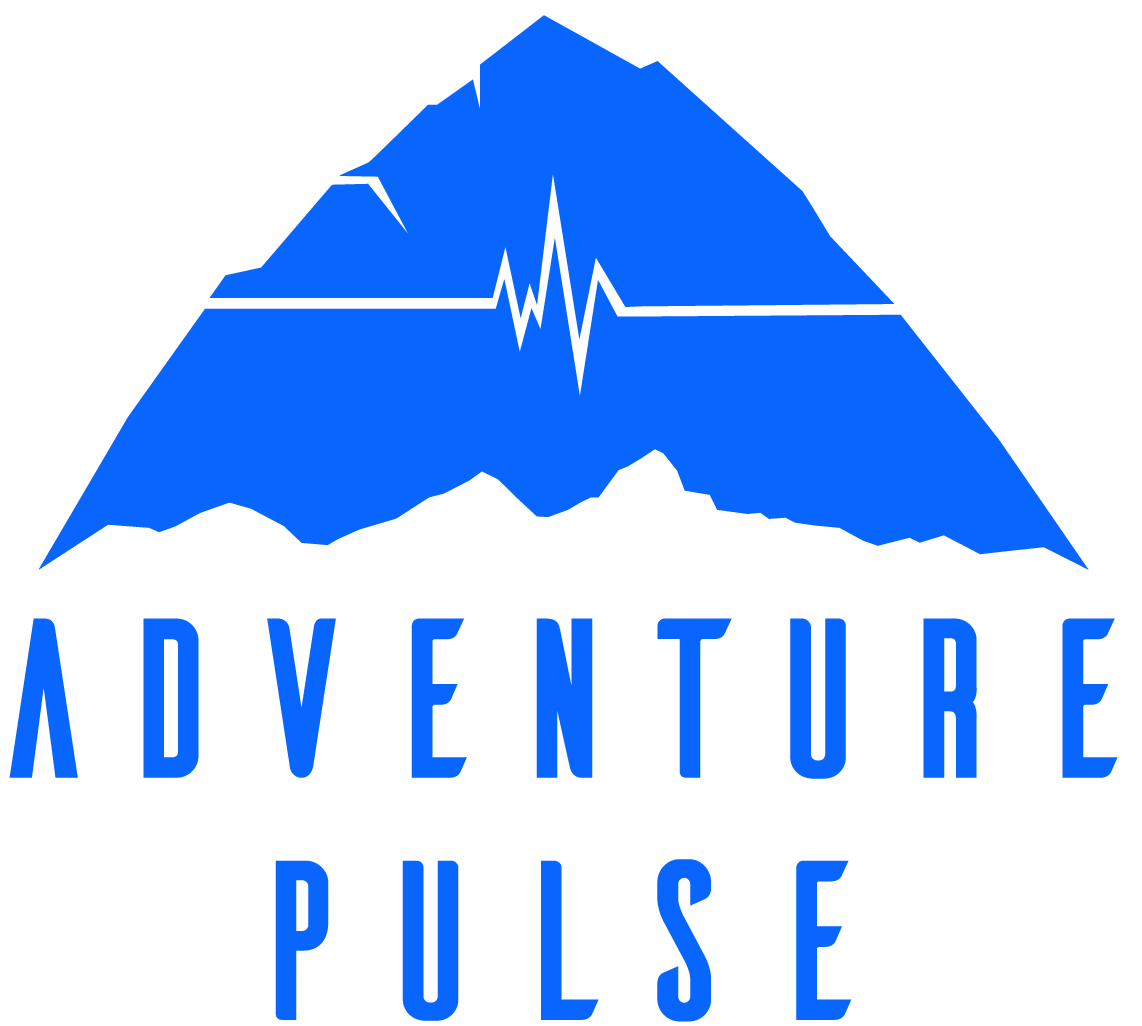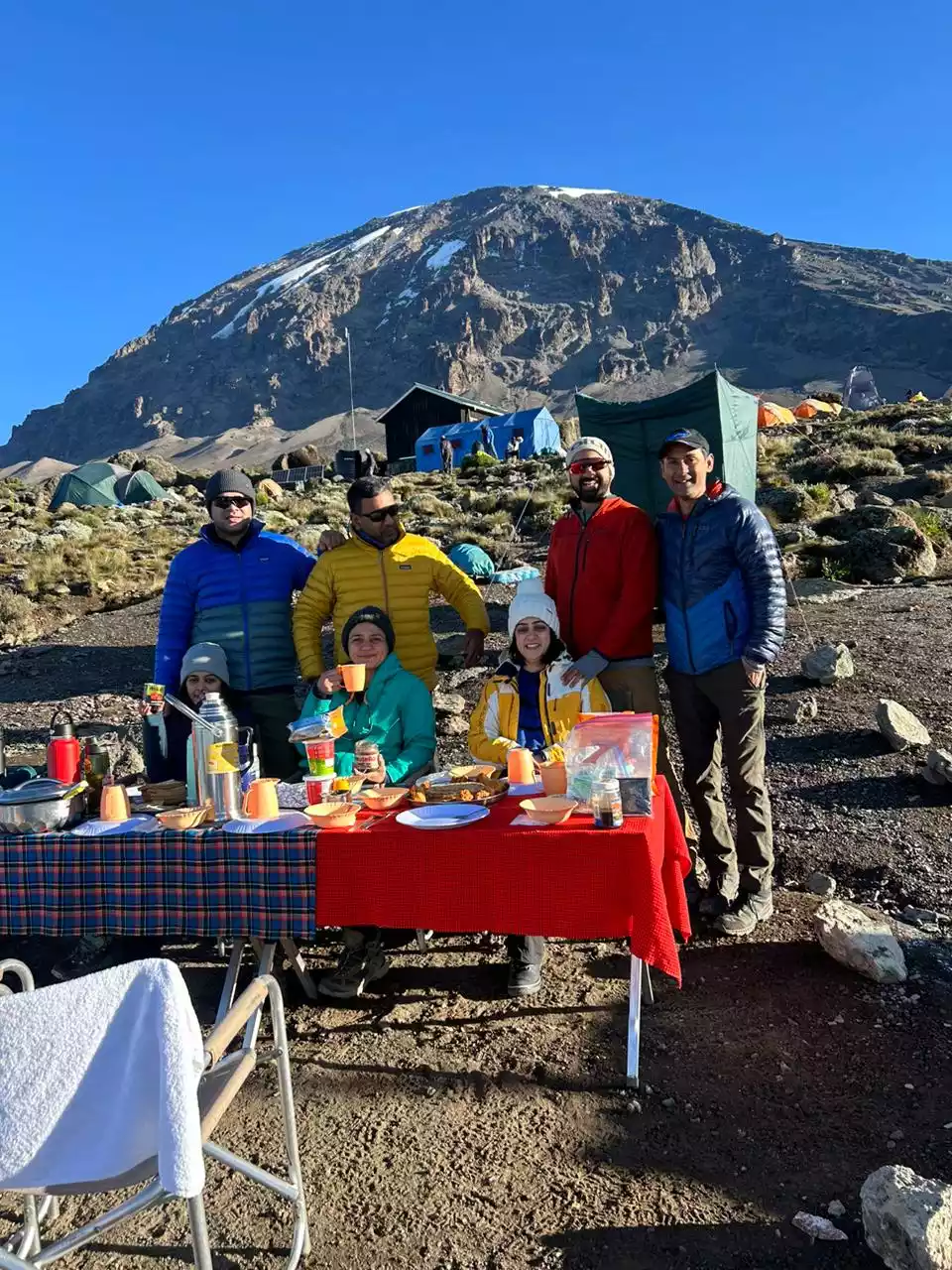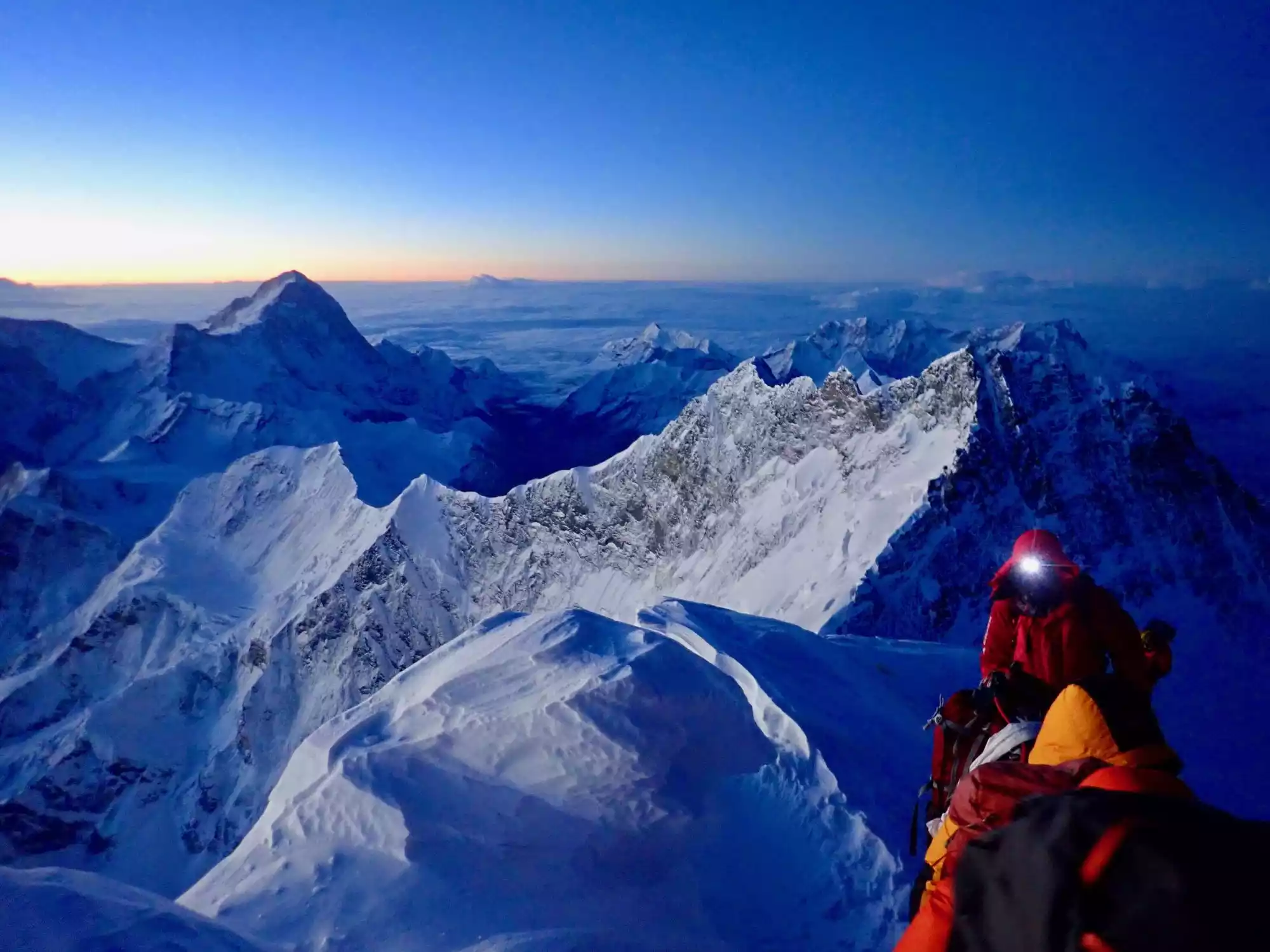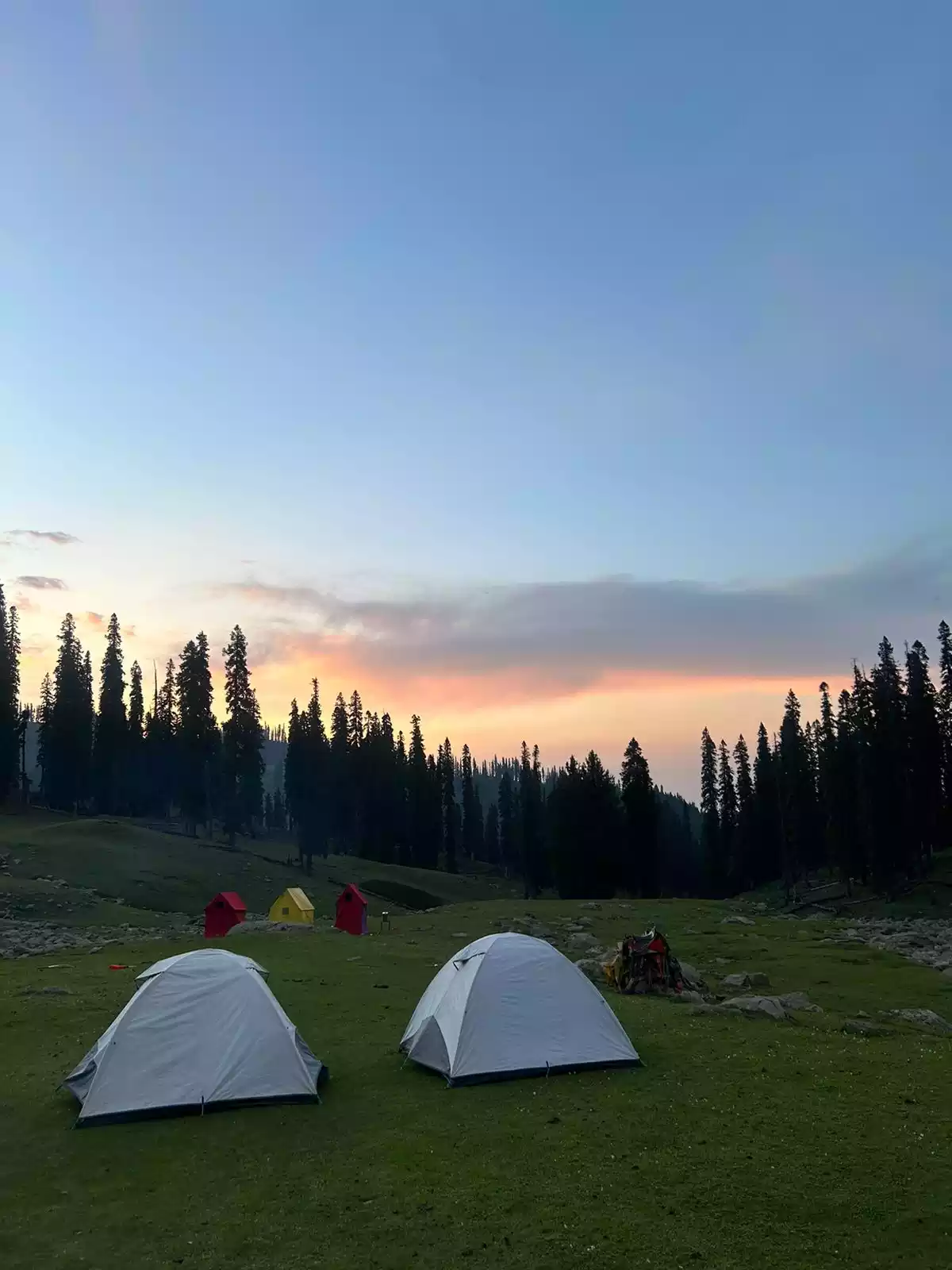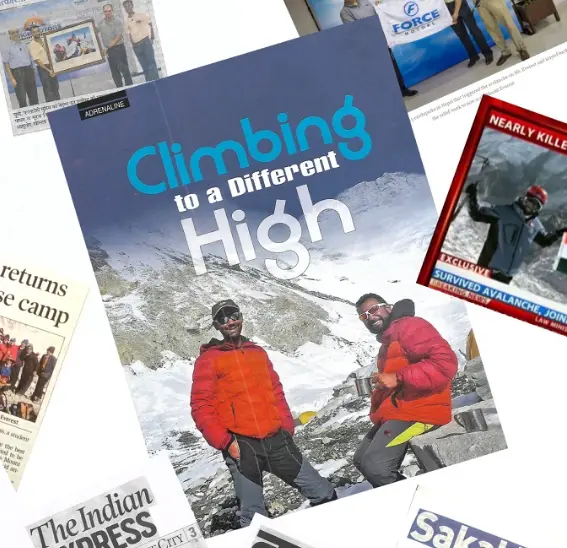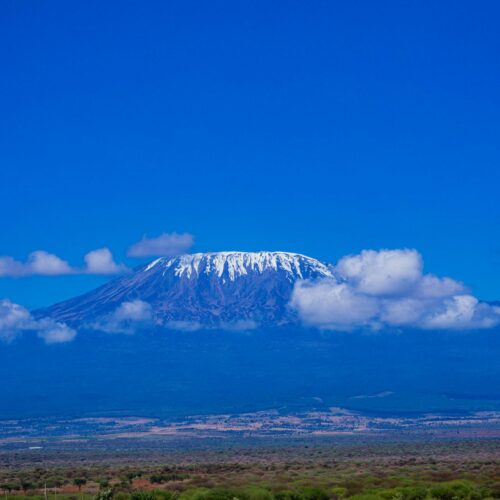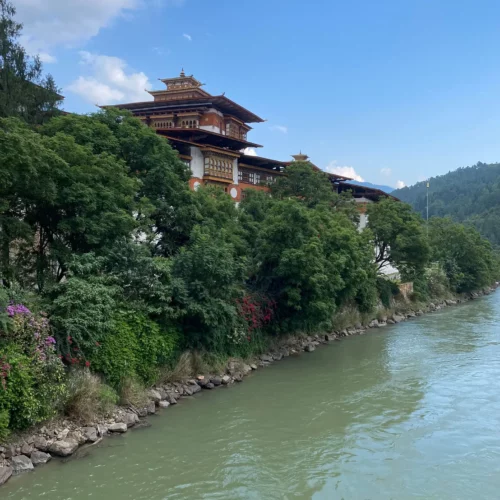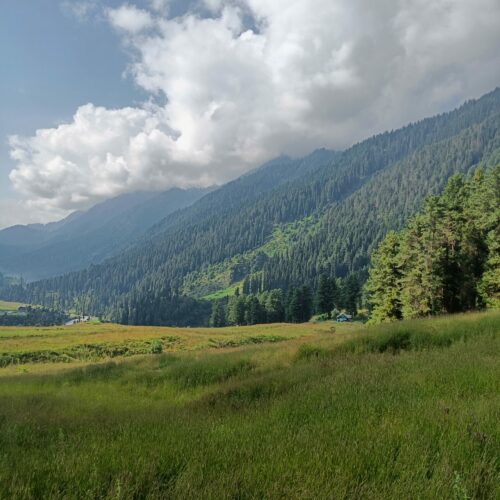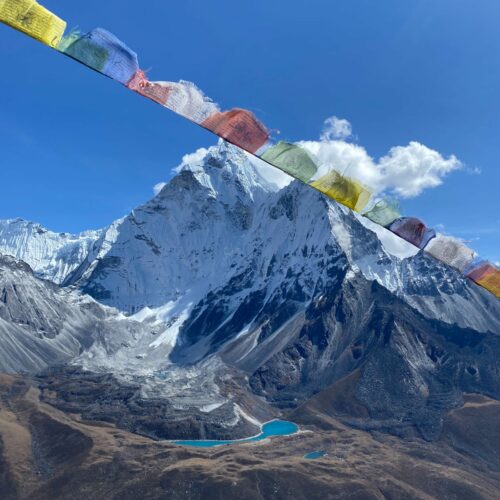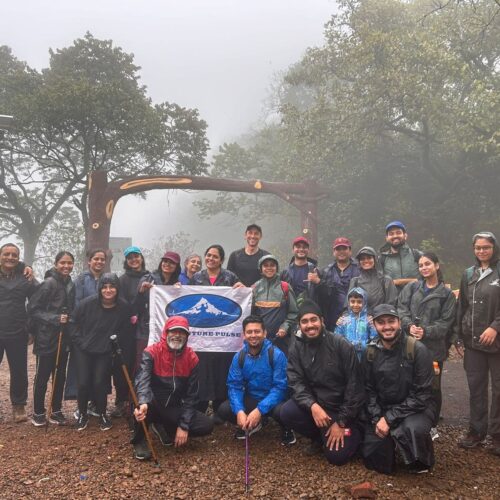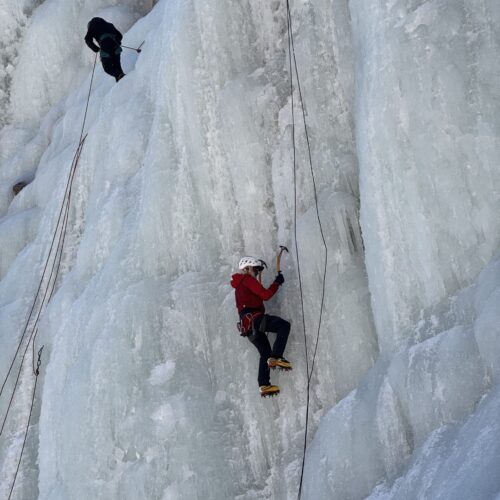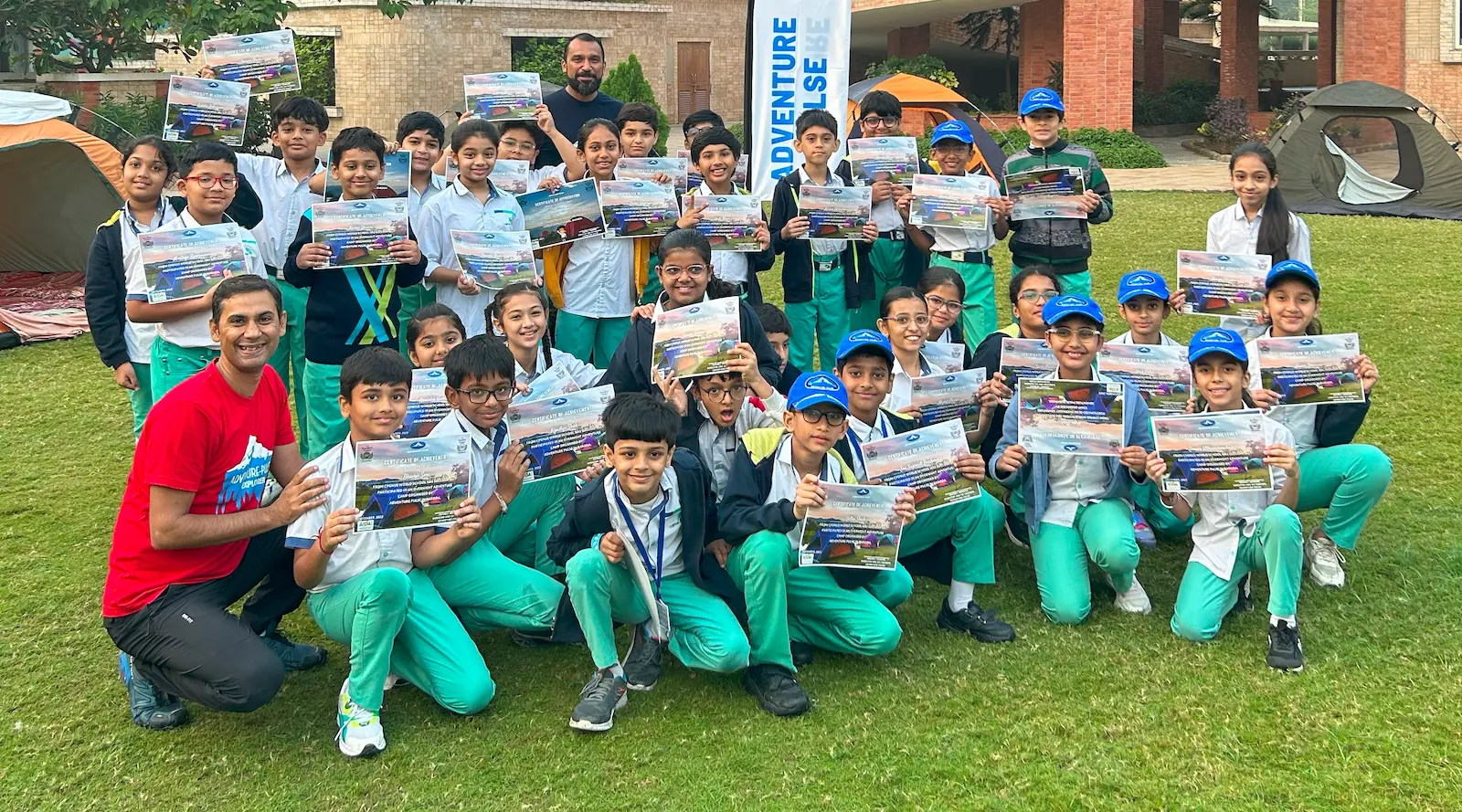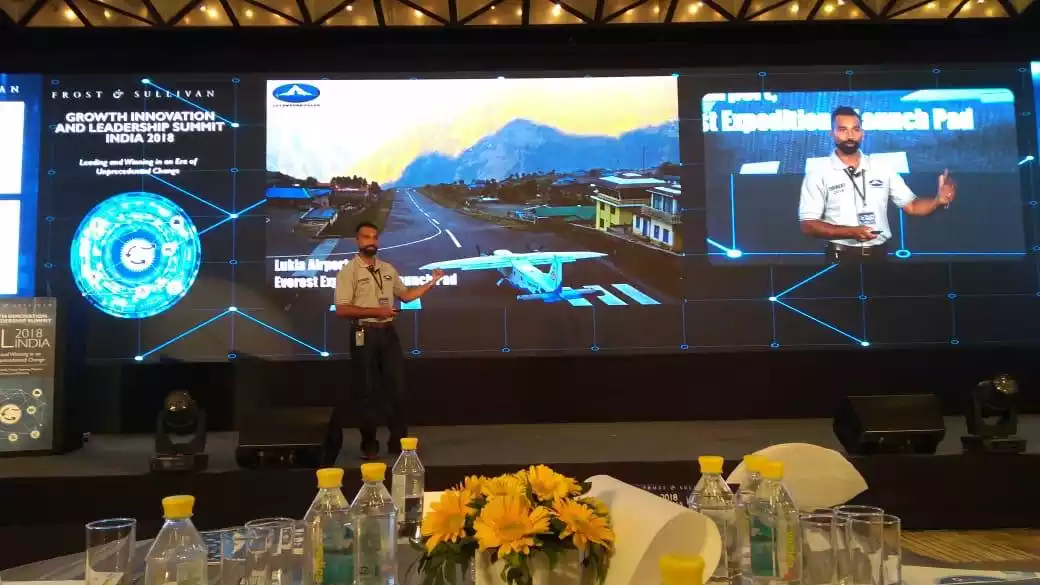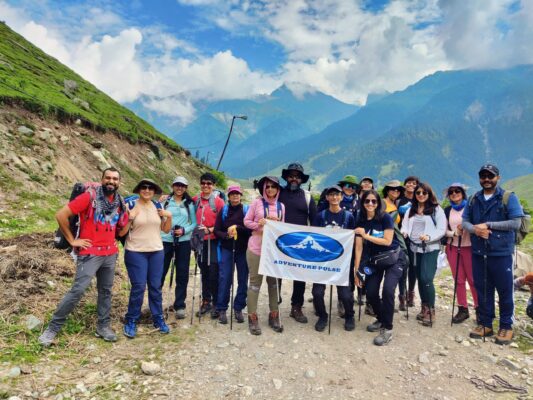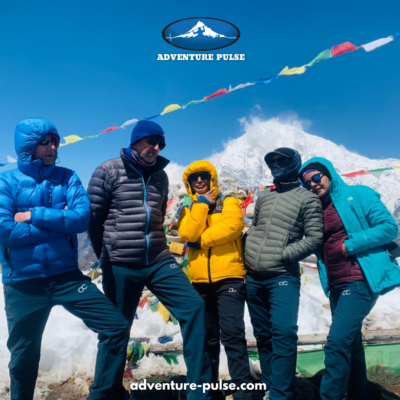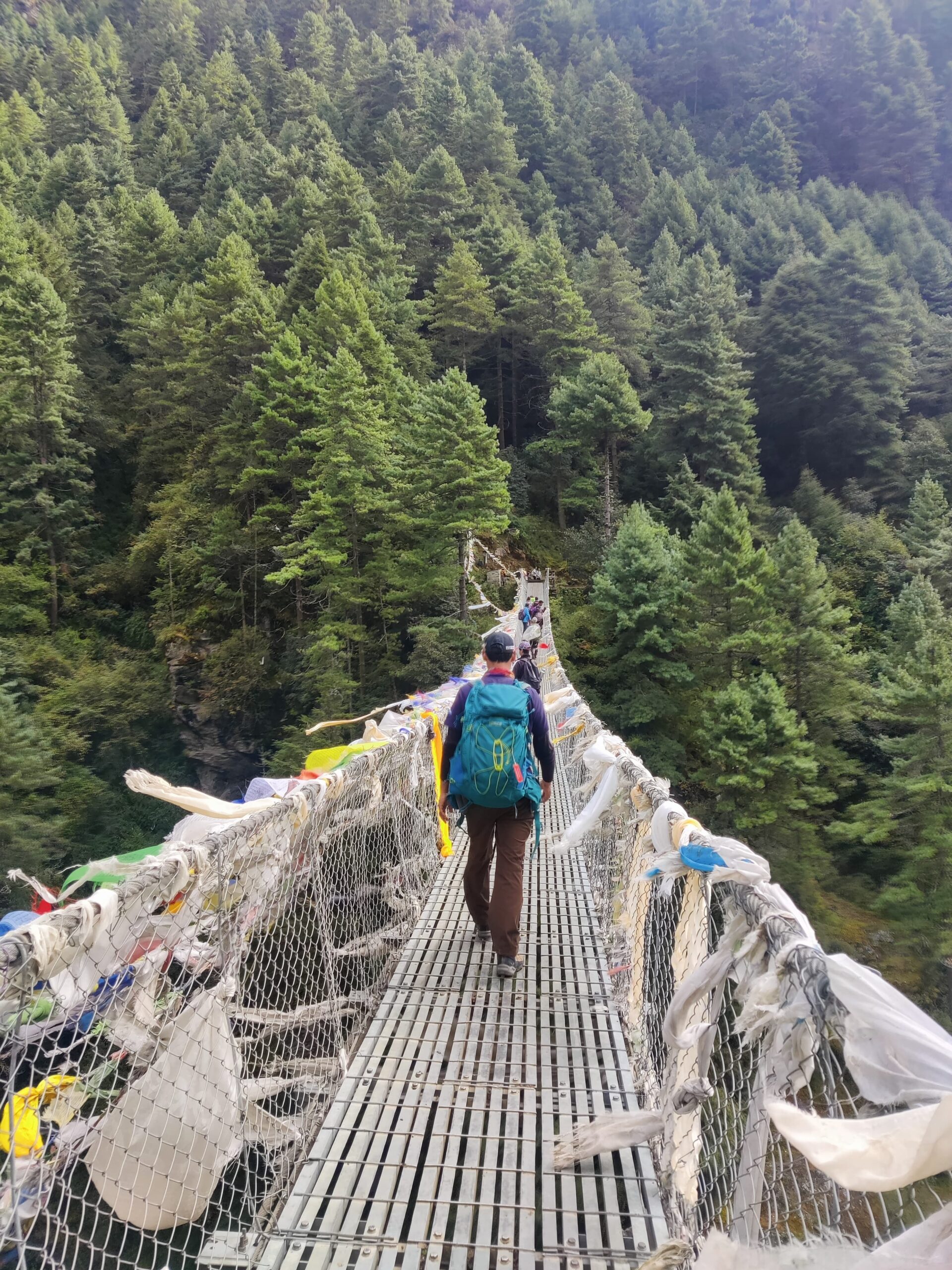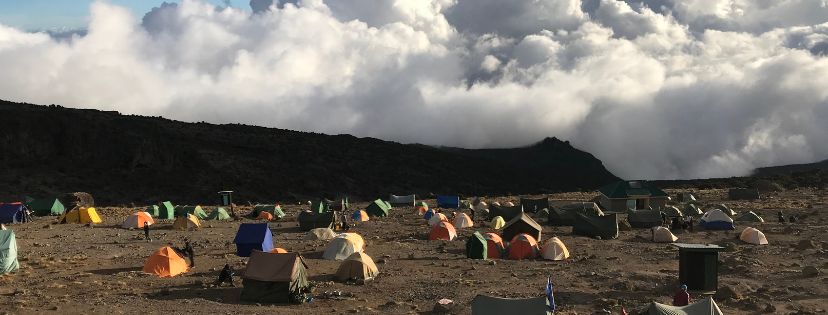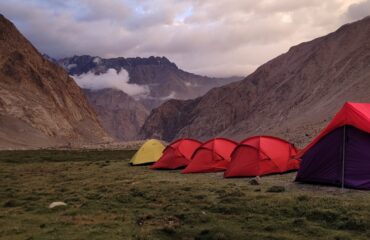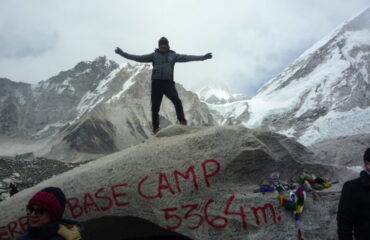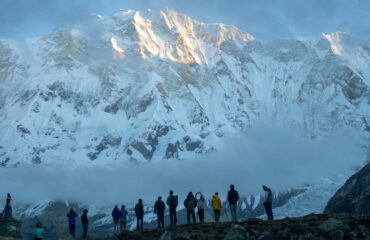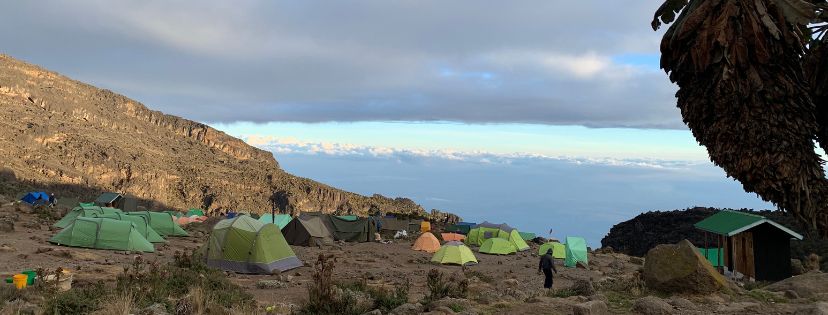
Introduction
Mount Kilimanjaro, an evergreen ticket to the stairs of divinity, stands at the roof of Africa. As some may say, it is tall, dark, and handsome, with its uniqueness and thrilling adventures. This trek in Africa is one of the seven summits of the world, centered in a wide stretch of tropical grassland in the biome. In fact, it is completely free-standing at the height of 5,895 meters. This volcanic mountain has not erupted for a long time and is considered dormant. Moreover, the breathtaking bird-view landscape of lush green forests at the bottom and ice on the top looks like a cherry on ice cream.

Mount Kilimanjaro not only offers the views but also the experience of climbing a mountain without gear. Notably, this dormant volcanic mount has three cones, namely Kibo, Mawenzi, and Shira, and one can climb with good fitness. There are seven different routes to Mount Kilimanjaro, namely:
-
-
- Machame Route: Known for a higher success rate and ample time for acclimatization, it’s also known as the Whiskey Route. While this route is challenging, and takes 7 days and is suggested for experienced trekkers.
- Lemosho Route: Considered the most scenic, it can be covered in 8 days. This route, with lush rainforests, starts from the west side of the mountain. It has a high success rate and is less crowded.
- Umbwe Route: The shortest and most difficult route covers in 6-7 days, requiring physical and mental strength. Due to its steepness, success rates are lower.
- Marangu Route: Also called the “Coca-Cola route” and “Common Man’s Everest,” this route has rocky terrain, dormitory-style huts for camping, and offers fewer scenic views. This route takes 5 days but becomes very challenging too.
- Rongai Route: Known for tranquility and wildlife, it has fewer crowds. However, it allows minimal acclimatization and features slow climbs and is completed in 6 days.
- Northern Circuit Route: This route is the longest, requiring 10-12 days. However, it has the highest success rate and offers panoramic views.
- Shira Route: Starting from the west, it reaches the Shira Ridge directly and takes 7-8 days. This route is no longer frequently used due to its high altitude and limited acclimatization time.
-
Introduction : Mount Kilimanjaro and Kilimanjaro National Park
Mount Kilimanjaro, located in Tanzania, is recognized as a national park. This designation not only provides various habitats for wildlife but also offers adventure enthusiasts a must-visit destination. UNESCO recognized Kilimanjaro as a World Heritage Site in 1987 for its remarkable ecosystem, which includes tropical rainforests and alpine deserts.
Trekking Kilimanjaro may appear easy, but you should never underestimate the challenge. In addition to planning the trek, you must consider your gear, physical and mental fitness, proper clothing and footwear, medicines, and safe practices for acclimatization. You will need certified trek leaders, local guides, and porters who specialize in navigation, campsites, first aid, and mountain safety. Porters play a crucial role by carrying your gear and supplies, including tents, food, and other essentials.
The Kilimanjaro National Park controls and manages everything on the trek. The park enforces stringent rules and regulations to conserve the ecosystem and protect the national park.
The park also has strict guidelines for the salaries and tips of guides and porters. Local support makes the expedition possible, as they carry everything, including your rucksack and camping equipment. The park sets fixed amounts for their salaries and tips to ensure they are not underpaid. In fact, the National Park completely bans solo treks without guides and porters. As part of the park’s management, you will also find “Camp Rangers” who manage supplies to the campsites and ensure various operating companies keep the campsites clean.
Why the Machame Route is Best for Mount Kilimanjaro
The Machame route is considered one of the most famous routes. In comparison to the Lemosho route, it has a higher success rate. Not only does it offer scenic views, but it also provides ample time for acclimatization. Thus, this route is also known as the Whiskey Route.
The Whiskey Route requires camping, making it more demanding in terms of fitness. Therefore, the Whiskey Route is a title that not only symbolizes its importance but also its strength and intent personality, comparable to that of the alcohol itself.

Attributes of the route –
The Machame route is loaded with scenic beauty, including flora and fauna with its lush greenery. Additionally, with panoramic views of 360 degrees from the Shira plateau, there is a clear view of the Uhuru Peak. One can also witness the unbeatable rising of the sun from the Karanga Valley and the Barranco Wall. Furthermore, the Machame route offers surprises at every step with breathtaking views of glaciers, seen from every camping site.
Some of the traits that make the Machame route different from the rest are:
- Acclimatization: The Machame route follows the law of acclimatization, which says to climb high and sleep low. As a result, this helps adjust the body to the surroundings by climbing higher during the day and descending a little lower for sleep. This also aids in exchanging the oxygen levels in the body and reduces the higher risk of AMS. Also, the Shira campsite, Barronco campsite and the Karanga lies within the same altitude around 3500 M which allow ample time to acclimatize. You climb high from Shira to Lava Tower and descending down towards Barronco Campsite. Then from Barronco Campsite to Barronco Wall and again descend back to Karanga Campsite. These three completely face each other in the similar altitude which make this route more suitable for the trekkers.
- Unique Campsites: This route offers campsites and shelters that make the experience more adventurous by encouraging sharing and connecting with nature.
- Ample Chance of Success: The trek lasts 6 to 7 days, allowing time for acclimatization. This schedule increases the chance of success compared to other routes.
- Popular and Easy: The maximum number of people use the Machame route, which is considered safe and well-maintained. Skilled leaders and porters provide full support on this popular route.
Campsites and Distances Covered on the Machame Route
Each day looks like walking into different zones. Crossing a rainforest, a moorland, alpine deserts and summiting to the glacier. One can calculate the distance of each day below:
| Day | Start | Altitude | End | Altitude | Distance | Altitude Gain/Loss | Time |
| 1 | Machame Gate | 1,640 m | Machame Camp | 2,835 m | 11 km | 1,195 m Gain | 5–7 hours |
| 2 | Machame Camp | 2,835 m | Shira Camp | 3,750 m | 5 km | 915 m Gain | 4–6 hours |
| 3 | Shira Camp | 3,750 m | Barranco Camp | 3,960 m | 10 km | 210 m Gain | 7–9 hours |
| 4 | Barranco Camp | 3,960 m | Karanga Camp | 4,035 m | 5 km | 75 m Gain | 4–5 hours |
| 5 | Karanga Camp | 4,035 m | Barafu Camp | 4,640 m | 4 km | 605 m Gain | 4–5 hours |
| 6 | Barafu Camp | 4,640 m | Mweka Camp | 3,080 m | 17 km | 1,255 m Gain
2,815 m Loss |
10–14 hours |
| 7 | Mweka Camp | 3,080 m | Mweka Gate | 1,640 m | 10 km | 1,440 m Loss | 3–4 hours |
Highlights of the Trek
The Machame route covers multiple types of terrain, including lush rainforests, moorlands, alpine desert, and glaciers.
- Undoubtedly, Machame offers stunning and natural views of the landscape. At the beginning, the trail welcomes you to the tropical rainforest with exotic flora and fauna.
- After a few kilometers of walking, you’ll witness the open moorlands with shrubs, grasses, and unique giant groundsels and lobelias.
- The Alpine desert awaits until you reach the barren and volcanic rock vegetation offering a clear view of the summit.
- Finally, glaciers greet you with open arms to encounter Kilimanjaro, covered with snow and an icy landscape.
Lava Tower
The Lava Tower is one of the most iconic and spoken about parts of the Kilimajaro trek. The tower is believed to be a result of volcanic activity. It appears to have occurred due to molten lava emerging from the Earth, which eventually cooled down, forming the current structure. The Lava Tower is located at an altitude of 4600 M. It is an ideal spot for climbers to rest and soak into the magnificent views around. The massive formation of this volcanic rock shares the beauty of the Kilimanjaro.
Camping Experience and Panoramic Views
Camping at every step on the Machame route offers its own experience. From its first campsite, Machame, followed by Shira, Barranco, Karanga, Barafu, and finally Mweka camp, you will have the experience of sleeping under a bright, unpolluted sky and under the stars. Moreover, the morning views from each camp location are spectacular.
Here are a few pros and cons of each route for Mount Kilimanjaro states below:
| Trek Routes | Trek Distance | Success Rate | Suitable For | Drawback |
| Northern Circuit | 98 km | Very High | Remote & best acclimatization | The longest route and the most expensive. |
| Machame | 62 km | High | Diverse landscape and acclimitazation | Very crowded and physically demanding. |
| Lemosho | 70 km | High | Acclimatization, atmosphere, and accomplishment | More expensive and very time-consuming. |
| Rongai | 73 km | Medium | Less crowd | Minimal acclimatization and less picturesque. |
| Marangu | 72 km | Low | Budget friendly | Limited acclimatization. |
| Shira | 56 km | Low | Scenic plateau | Increased risk of altitude first |
| Umbwe | 53 km | Low | Experience and challenging | Low success, difficult, and steep |
Best Time to Climb Kilimanjaro
While you can technically climb Mount Kilimanjaro year-round, the best times to embark on this adventure are from January to March and July to September.
From January to March, the weather is typically perfect with bright, clear skies. In fact, the snow at the summit creates an ideal opportunity for stunning photos. The season is generally dry and warm, with temperatures ranging from -15°C to 26°C. Moreover, the trail sees fewer trekkers, which allows for a more peaceful and quiet journey, with only the sound of nature accompanying you.
Conversely, from July to September, these months coincide with the busy summer holidays in the Northern Hemisphere, making it the most crowded period on Kilimanjaro. However, the weather remains excellent, especially for both the Marangu and Machame routes, with temperatures ranging from -20°C to 21°C. Despite the crowds, the views remain spectacular, and this period also offers the opportunity to share experiences with fellow trekkers.
Physical Fitness
Climbers need solid fitness and thorough preparation to tackle Kilimanjaro. In other words, it’s not just about walking or exercising; it’s also about training your body to handle both the altitude and terrain.
First and foremost, you must undergo a medical and fitness checkup. This checkup will help you understand your current health and fitness level, ensuring you are physically ready for the challenge. Furthermore, avoid overstraining your heart. Your body and heart need time to adjust to higher altitudes, so gradually increase your training intensity. For example, start by carrying a backpack with the weight you intend to carry on the mountain, while practicing climbing stairs daily to build endurance. Aim to keep your heart rate between 135-140 bpm, which simulates the effort needed for elevation gain.
In addition, familiarize yourself with the terrain. Kilimanjaro presents a variety of routes, with steep climbs, ridges, cliffs, and valleys. By understanding these features, you will better prepare yourself mentally and physically for the trek. The altitude gain on a daily basis can range from 2,500 to 4,500 feet, and you may walk 5-10 km each day, depending on your fitness level. Thus, the pace will vary from person to person.
Moreover, follow your guides’ instructions during the trek. They will provide important guidance for both the ascent and the descent. Just as you need uphill training, you also need downhill training to maintain stability and strengthen your legs and core.
Gear and Essentials
To ensure both safety and comfort, it’s essential to pack the right gear and apparel. This includes clothing for various weather conditions, as temperatures can vary dramatically from the base to the summit. For a comprehensive list of recommended gear, please refer to the list on our website.
Conclusion
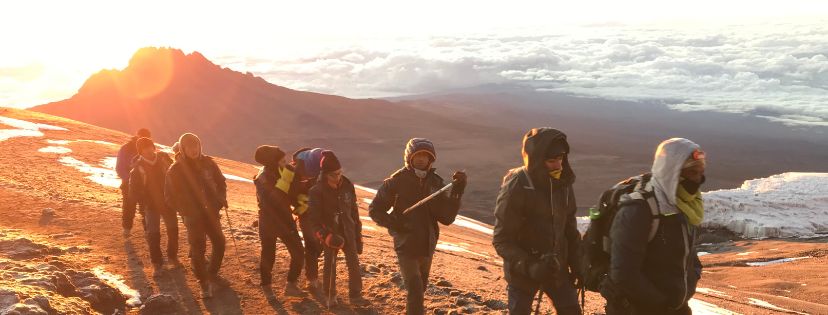
Climbing Mount Kilimanjaro via the Machame route offers one of the best experiences to reach the summit. Specifically, Machame not only provides ample time for acclimatization but also offers unique campsites and breathtaking views at every step.
In conclusion, if you love thrilling adventure sports like trekking, then Mount Kilimanjaro should definitely be on your bucket list. This climb is an achievement in itself, offering the warmth and beauty of Tanzania, while immersing you in the natural wonders of the mountain. Above all, the rich flora and fauna surrounding you will make you feel closer to nature, far away from the hustle and bustle of everyday life.
Blog credits – Nabamita Choudhury
